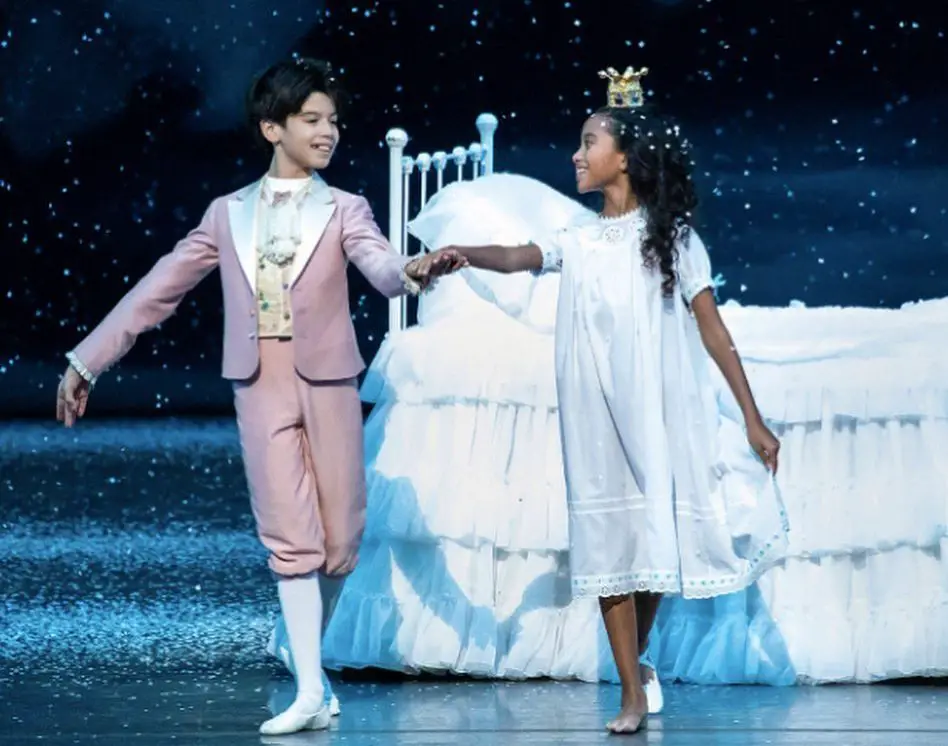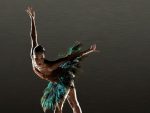Last week, Charlotte Nebres made headlines as the first black lead featured in NYC Ballet’s eighth annual rendition of “The Nutcracker.” The ballerina, who is only 11 years old, is set to play the role of Marie in the George Balanchine adaptation of the ballet production.
A student at the School of American Ballet, she’s included in one of the two alternating roles for Marie. As The New York Times notes in their interview with Nebres, the roles of Marie — sometimes referred to as Clara, depending on the production company — and the Nutcracker Prince are usually dual cast. While only at the beginning of her ballet career, she is already making history 65 years after the recital first graced the stage.
The young dancer’s mother is from Trinidad and her father is from the Philippines. When asked about her motive to dance, Nebres said black ballerina Misty Copeland inspired her to pursue ballet.
“I saw her perform and she was just so inspiring and so beautiful,” said Nebres to The New York Times. “When I saw someone who looked like me onstage, I thought, that’s amazing. She was representing me, and all the people like me.”
Copeland showed her excitement for the young dancer’s early success. Shortly after the news was announced by City Ballet, she reposted a picture of Nebres during a dress rehearsal. Copeland also visited the young ballerina after a performance and sent along a large bouquet of flowers to congratulate her on her achievement.
The importance of this moment is not misunderstood by the little ballerina or her mother, Danielle Nebres. “Wow, that seems a little late,” said Danielle Nebres in the NYT interview, when Charlotte told her she was the first black Marie. “That was just a whole different conversation than that initial, oh my gosh, you’re going to do this thing.”
Described as an introvert, Nebres’ talent surely spoke volumes during the casting. Dean Abergel, the children’s ballet master of NYC Ballet, made it clear that a casting call for “The Nutcracker” is not like any other. It’s far less casual and is the stepping stone to being part of the most mystical ballet performance of the year. Abergel said there is a certain delicacy to Charlotte as a performer after having watched her dance in other recitals.
With an ability that’s arguably beyond her years, Nebres’ performance in a production of “The Sleeping Beauty” caught Abergel’s attention. The talent she showcased as Little Red Riding Hood in the performance was evident while auditioning for “The Nutcracker.” Nebres “stole the show” and her mother was also happily shocked by her theatrical talent.
“I just thought, they picked the wrong child. She is introverted in a way. But then when I saw her, I thought, O.K., I’m the one that doesn’t know Charlotte,” Danielle Nebres admitted in the NYT interview, with a laugh. “I think that’s the most interesting thing about this experience for me. You don’t know what people are seeing in your child, and they are definitely seeing something in her.”
Charlotte and her fellow child cast mates are an overall diverse group. The other young leads are Sophia Thomopoulos (Marie), who is Korean and Greek; Tanner Quirk (Charlotte’s casted Prince), who is half-Chinese; and Kai Misra-Stone (Sophia’s casted Prince), who is half-South Asian.
They are a reflection of City Ballet’s recent efforts to diversify its company. Due to Misty Copeland’s Category 5-like impact on classical dance, it’s as if each company’s creative directors gathered together to add color to the stage. Copeland, inarguably, contributed to giving black people a seat at pop culture’s table this decade. Afterward, everyone began to notice and report on the lack of ballet dancers of color.
Ballet is a historically whitewashed art form that rarely features people of color in major productions. Although iconic figures such as Alvin Ailey and others radically changed this through their work, the problem remains. Copeland also expressed that the lack of melanin in ballet is also due to obsolete mindsets that insist a pale complexion best captures the magic in performance.
However, in 2015 the City Ballet announced a plan to create programs meant to variegate its roster of dancers. What did these plans entail? It included changing the recruiting tactics of their affiliate school, The School of American Ballet.
Through focusing on the youth, City Ballet understands it’s impacting the overall image of future generations of ballet dancers. It’s a change meant to allow kids the opportunity to achieve their version of success through ballet. An actual chance at being a professional ballet dancer means opening the doors to the dance studio completely, not just letting in a few “token” students to be placed on a pedestal for media consumption.
It’s a domino effect where once the stage is diverse, so is the audience. As the older generations of ballet viewers continue to age, today’s younger counterparts take up the traditions they left behind. In an era where diversity is demanded to put an end to blatant discrimination, continuing a tradition that segregates instead of amalgamating is only digging a hole.
However, the conversation should only be focused on race when there’s a lack of diversity. Or, when there’s obvious hostility toward casting those opposite of blonde hair and blue eyes. It should be as simple as: Wow, they are an amazing dancer, let’s cast them.
Ideally, this progresses into a state where saying, “She’s a black ballerina,” simply turns into “She’s a ballerina.” It’s not just about having nonwhite students pose for a few pictures. It’s about training a student to have the same abilities and opportunities to eventually join a professional dance company.
Similar to Copeland’s story, many other students of color might struggle with the resources to afford dance classes. Or, the support to pursue dance as a career, but that’s where passion and scholarships come into play.
S.A.B. is taking the initiative to scout potential students with great talent, or those already up-to-par with the level they should be for their age. Accepting students who are nonwhite but lack a certain level of skill isn’t necessarily the answer, either.
Yet when a dream is granted such as it was for Nebres, it’s simply amazing. Less than 100 years ago, the U.S. blatantly rejected the mere thought of a black or nonwhite classical dancer but today it’s seen as necessary.
“It’s pretty amazing to be not only representing S.A.B., but also representing all of our cultures,” Nebres also commented in the interview. “There might be a little boy or girl in the audience seeing that and saying, hey, I can do that, too.”
Congratulations to a young Marie! This year’s City Ballet’s “The Nutcracker” production will run through Jan. 5. Tickets are available for purchase on the company’s website.














